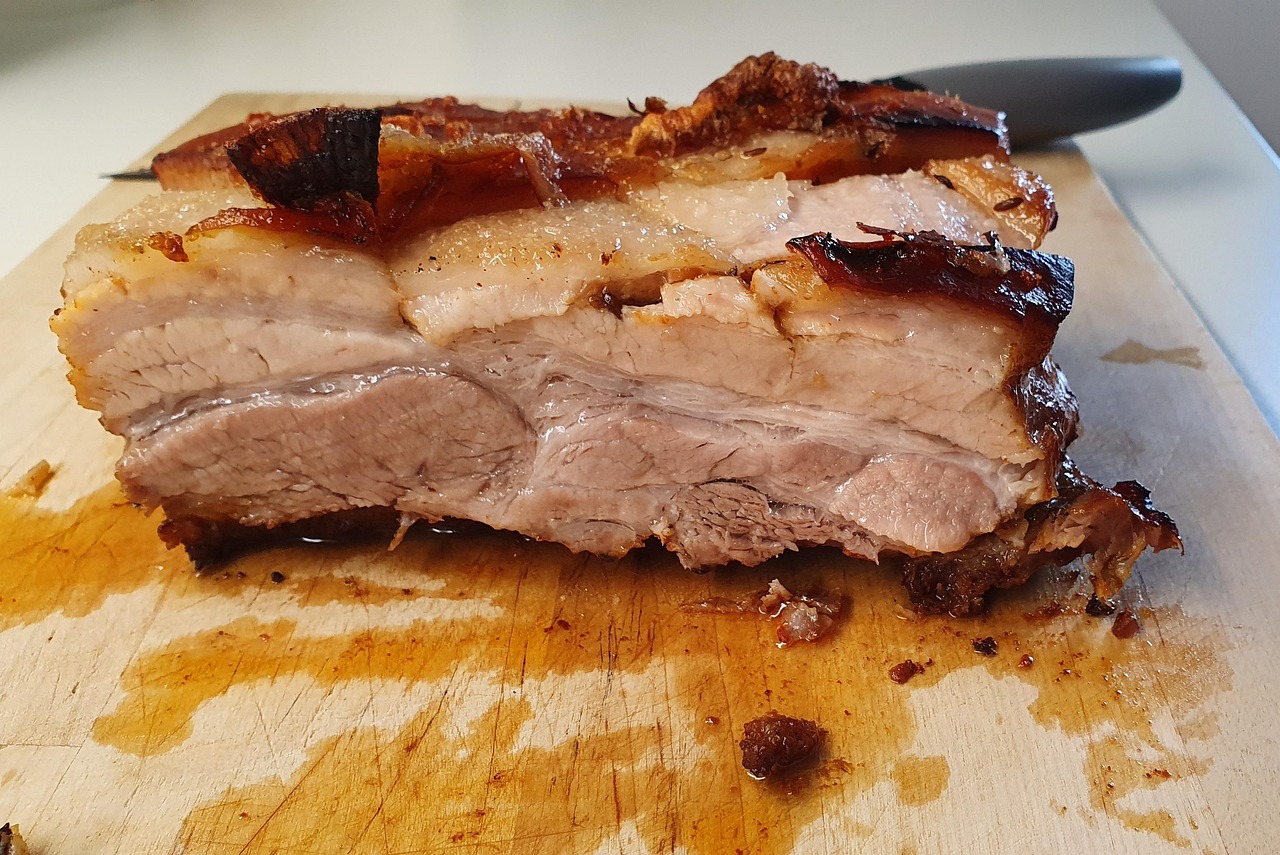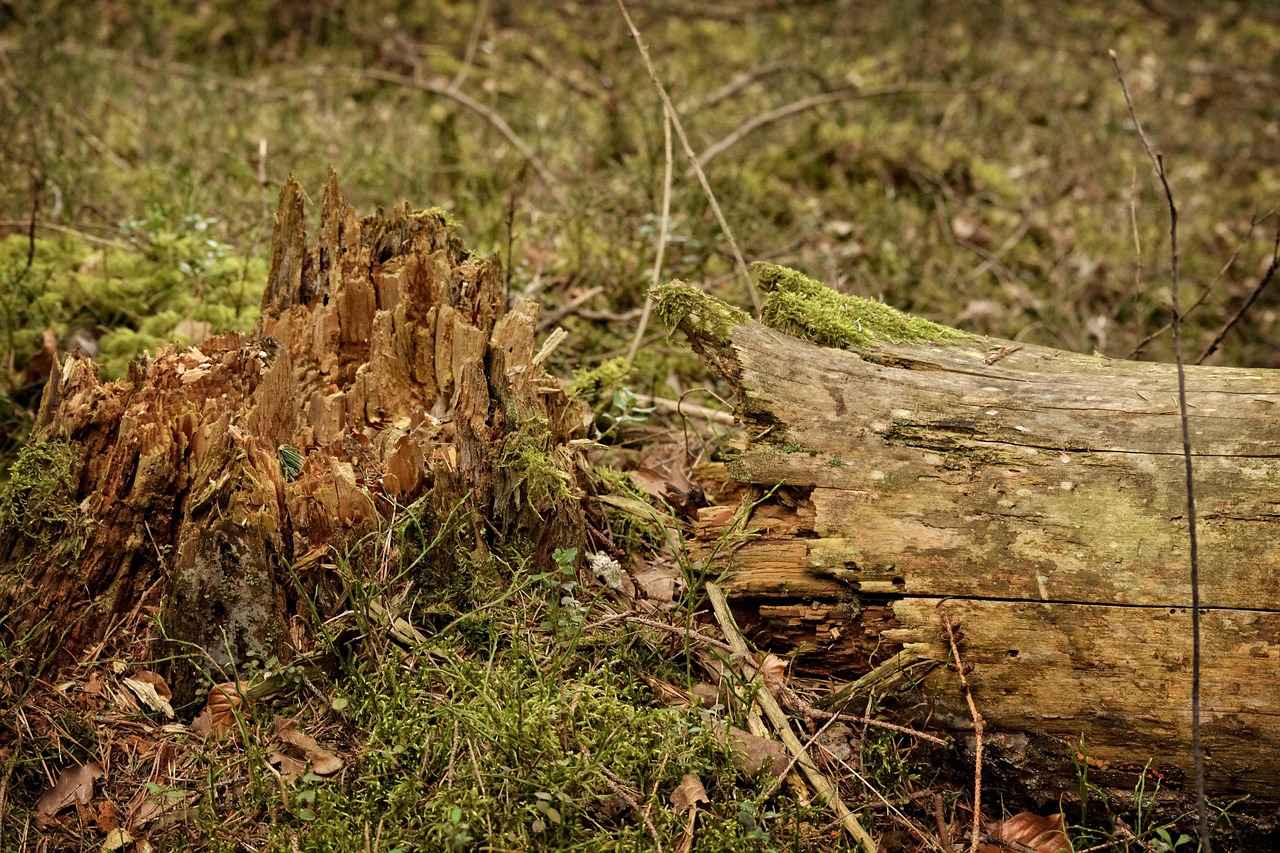This article delves into the importance of resting pork butt, providing insights on optimal resting times and methods to enhance flavor and tenderness. By understanding the resting process, you can ensure a delicious result for your culinary endeavors.
Resting pork butt is crucial for achieving the best flavor and texture. When meat cooks, the juices are pushed towards the center. Allowing it to rest enables these juices to redistribute throughout the meat, resulting in a more succulent and flavorful bite. Without this essential step, you risk serving dry, tough meat.
The ideal resting time for pork butt typically ranges from 30 minutes to 2 hours. Factors such as the size of the cut and cooking method can influence this period. For larger cuts, longer resting times are beneficial to maximize flavor and moisture retention.
- Cooking Method: Different methods, like smoking or roasting, can require adjustments in resting time.
- Meat Size: Larger cuts generally need more time to rest to allow for thorough juice redistribution.
- Temperature: The internal temperature of the meat can also dictate how long it should rest.
Implementing effective resting practices can significantly enhance the flavor profile of pork butt. Here are some techniques:
- Wrap the Meat: Wrapping the pork butt in foil or butcher paper can help retain moisture.
- Use a Cooler: Placing the wrapped meat in a cooler can maintain its temperature while it rests.
Properly resting pork butt involves specific steps to maximize flavor retention:
- Wrapping Techniques: Use aluminum foil or butcher paper to wrap the pork butt tightly. This method helps keep the meat warm and juicy.
- Using a Cooler: After wrapping, place the pork butt in a cooler. This technique is particularly effective for longer rests, ensuring the meat remains at an optimal temperature.
Avoiding common pitfalls is essential for perfecting your pork butt. Here are some mistakes to watch out for:
- Cutting Too Early: One of the biggest mistakes is slicing the pork butt before it has rested. This can lead to significant juice loss and a less flavorful result.
- Insufficient Resting Time: Not allowing enough time for the pork butt to rest can result in dry meat. Make sure to give it adequate time to achieve the best taste and tenderness.
By following these guidelines, you can ensure that your pork butt is not only flavorful but also tender and juicy, making it a standout dish for any meal. Remember, patience is key when it comes to resting meat, and the rewards are well worth the wait.
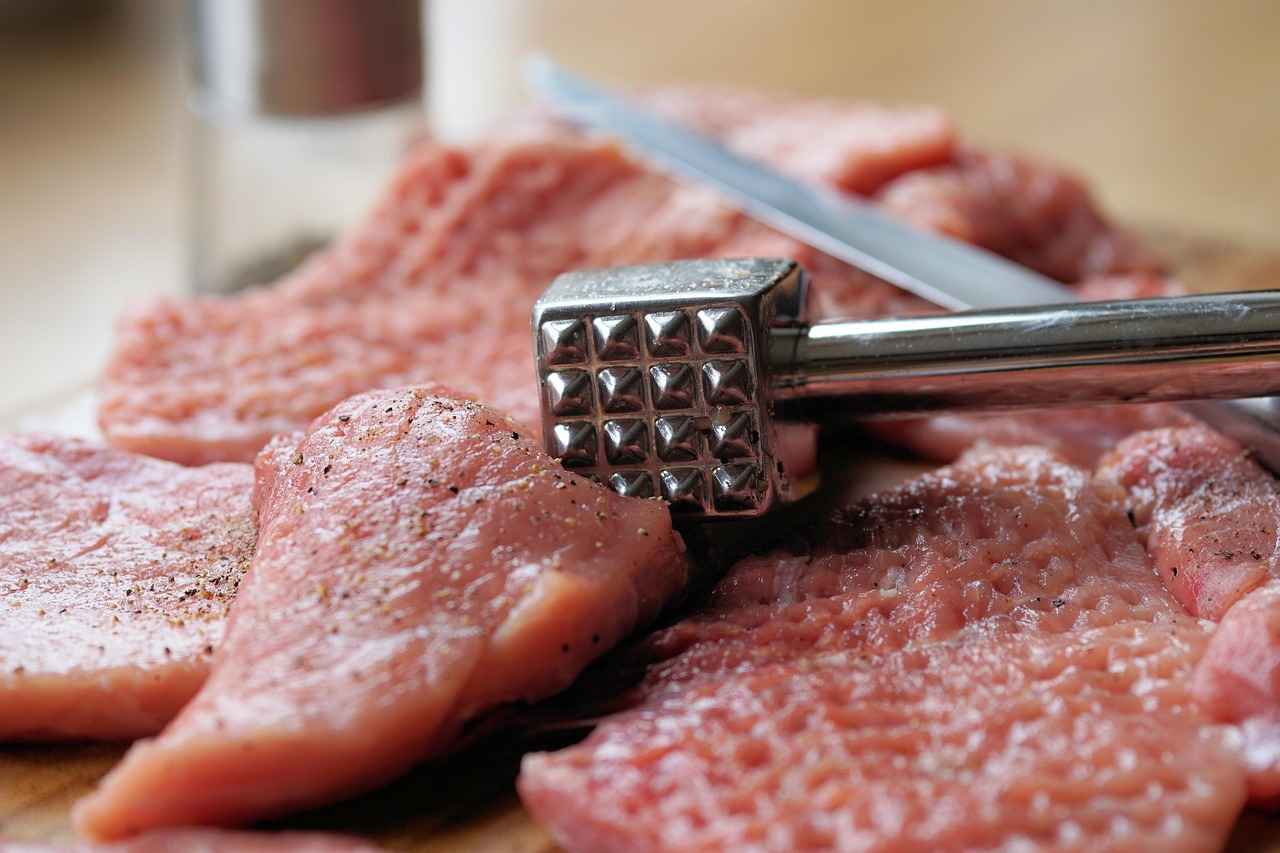
Why is Resting Pork Butt Important?
When it comes to preparing a delicious pork butt, understanding why resting is important can significantly enhance your culinary experience. Resting meat, particularly pork butt, is a crucial step that many home cooks overlook. This process is not merely a suggestion; it is a vital phase that allows the meat to achieve its full potential in terms of flavor and tenderness.
During cooking, the muscle fibers in pork butt contract as they heat up, forcing the juices to the center of the meat. If you cut into the pork butt immediately after cooking, these juices will escape, resulting in a drier and less flavorful product. By allowing the meat to rest, you enable the juices to redistribute throughout the pork, leading to a more succulent and enjoyable eating experience.
Experts recommend a resting period of 30 minutes to 2 hours, depending on the size of the cut. The larger the pork butt, the longer it should rest. This resting time not only enhances flavor but also improves the overall texture, making each bite tender and juicy.
Resting pork butt allows the muscle fibers to relax, which means that when you finally slice into the meat, it will be more tender and easier to chew. This process also helps to preserve the meat’s moisture, ensuring that every bite is packed with flavor. The result? A perfectly cooked pork butt that is flavorful, juicy, and sure to impress.
As mentioned earlier, the ideal resting time can vary. A general guideline is to rest pork butt for approximately 1 hour for every 5 pounds of meat. For instance, a 10-pound pork butt would benefit from a resting period of about 2 hours. However, it’s essential to monitor the internal temperature to ensure it remains warm enough during the resting phase.
- Wrap the Meat: After cooking, wrap your pork butt in aluminum foil or butcher paper. This helps retain heat and moisture.
- Use a Cooler: Placing the wrapped pork butt in a cooler can maintain its temperature while allowing it to rest effectively.
- Keep it Covered: Covering the meat with towels can provide additional insulation, ensuring that it stays warm throughout the resting period.
To achieve the best results, it’s crucial to avoid common pitfalls. One of the most significant mistakes is slicing the pork butt too early. Cutting into the meat before it has had a chance to rest can lead to a loss of valuable juices, resulting in a dry and less flavorful dish.
Another mistake is not allowing enough resting time. Insufficient resting can compromise the tenderness and flavor of your pork butt, leaving you with a disappointing culinary result. Always prioritize resting time to maximize your pork butt’s flavor and texture.
In summary, resting pork butt is a critical step that should not be overlooked. By allowing the meat to rest, you enable the juices to redistribute, enhancing both flavor and tenderness. Follow the recommended resting times and best practices to ensure that your pork butt is the star of your next meal.
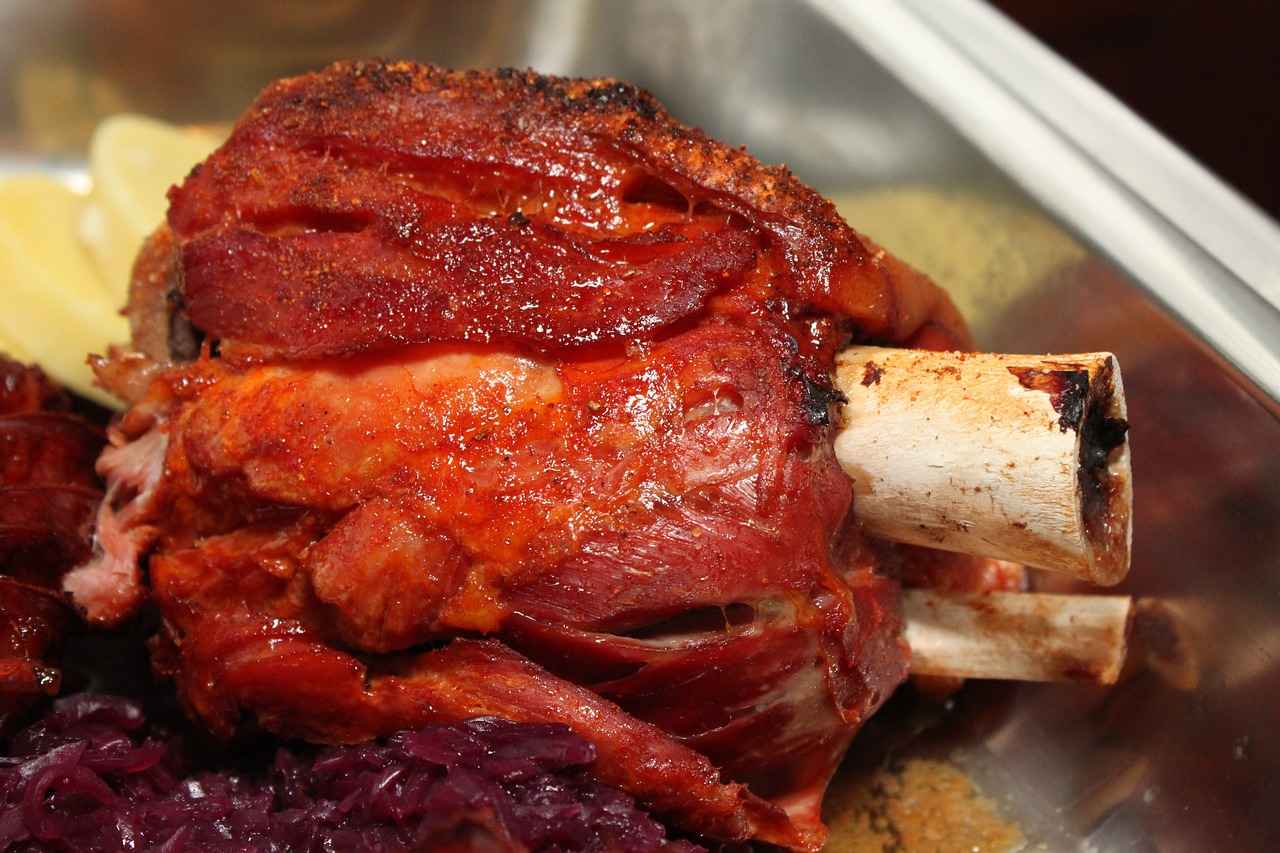
How Long Should You Rest Pork Butt?
When it comes to achieving the perfect pork butt, resting time is an essential factor that often goes overlooked. This crucial step allows the meat to relax and the juices to redistribute, resulting in a more flavorful and tender dish. But how long should you really rest pork butt for the best results? Let’s dive into the details.
The ideal resting time for pork butt can vary significantly based on several factors. Generally, a resting period of 30 minutes to 2 hours is recommended. The exact duration depends on the size of the cut and the cooking method used. For instance, smaller cuts may only require a shorter resting time, while larger pieces benefit from extended periods.
- Cooking Method: Different methods such as smoking, roasting, or braising can affect resting time. For example, smoked pork butt may require a longer resting period to allow the flavors to fully develop.
- Meat Size: The thickness and weight of the pork butt play a significant role in determining how long it should rest. Larger cuts typically need more time for the juices to redistribute evenly throughout the meat.
- Internal Temperature: The internal temperature at which you pull the pork butt from the heat source also matters. Higher temperatures may necessitate longer resting times to prevent the meat from drying out.
Implementing effective resting practices can significantly enhance the flavor profile of your pork butt. Here are some tips:
- Wrap the Meat: Wrapping the pork butt in foil or butcher paper can help retain moisture during the resting period. This technique ensures that the meat remains juicy and flavorful.
- Use a Cooler: Placing the wrapped pork butt in a cooler can maintain its temperature while allowing it to rest. This method is particularly effective for longer rests and helps preserve the meat’s quality.
To achieve the best results, it’s essential to avoid common pitfalls associated with resting pork butt:
- Cutting Too Early: One of the biggest mistakes is slicing the pork butt before it has had adequate time to rest. Doing so can lead to a loss of juices, resulting in dry and less flavorful meat.
- Not Allowing Enough Time: Insufficient resting time can compromise the tenderness and flavor of your pork butt. Always ensure that you allow enough time for the meat to rest properly.
In conclusion, resting pork butt is a vital step in the cooking process that should not be rushed. By understanding the factors that influence resting time and implementing best practices, you can ensure that your pork butt is both flavorful and tender. Whether you’re preparing a feast for a special occasion or just a weeknight dinner, taking the time to rest your pork butt will undoubtedly elevate your culinary creations.
Factors Influencing Resting Time
When it comes to preparing a delicious pork butt, understanding the factors that influence resting time is essential for achieving the best flavor and texture. Several key elements come into play, including the cooking method, the temperature of the meat, and its size. Each of these factors can significantly affect how long you should allow your pork butt to rest before slicing into it.
- Cooking Method: The way you cook your pork butt can dramatically alter the resting time required. For instance, if you smoke your pork butt, the low and slow cooking process often means that the meat will need a longer resting period to allow the juices to redistribute thoroughly. Conversely, if you are roasting it at a higher temperature, a shorter resting time may suffice.
- Temperature: The internal temperature of the pork butt at the time of removal from heat is another crucial factor. A higher temperature typically necessitates a longer resting time to prevent the meat from drying out. As the meat cools slightly, the juices will settle, ensuring each bite remains juicy and flavorful.
- Size and Thickness: The size of the pork butt is perhaps one of the most significant factors influencing resting time. A larger cut of meat will require a more extended resting period compared to smaller pieces. This is because larger cuts take longer for the internal juices to redistribute evenly throughout the meat.
To determine the optimal resting time, consider the general guideline of allowing the pork butt to rest for about 30 minutes to 2 hours. A good rule of thumb is to rest the meat for at least 30 minutes for smaller cuts and up to 2 hours for larger ones. This resting period not only enhances flavor but also improves tenderness, making for a more enjoyable eating experience.
Another aspect to keep in mind is that during the resting phase, the meat continues to cook slightly due to residual heat, a phenomenon known as carryover cooking. Therefore, it’s wise to remove the pork butt from heat when it reaches a few degrees below your desired final temperature. This technique ensures that your meat is perfectly cooked and not overdone by the time you are ready to serve.
In conclusion, understanding these influencing factors can help you master the art of resting pork butt. By paying close attention to the cooking method, temperature, and size of the meat, you can ensure that your pork butt is not only flavorful but also tender and succulent. Taking the time to rest your pork butt will ultimately elevate your culinary creations, making every meal a memorable one.
Cooking Method Considerations
When it comes to preparing pork butt, the cooking method you choose plays a significant role in determining the final flavor and texture of the dish. Different techniques, such as smoking, slow-roasting, or even braising, not only influence the cooking time but also affect how long the meat should rest after being cooked. Understanding these nuances can help you achieve the best possible outcome for your culinary creations.
How Does Cooking Method Affect Resting Time?
Each cooking method imparts unique characteristics to the meat, which in turn affects the ideal resting time. For instance, smoking typically involves low and slow cooking, allowing the meat to absorb rich flavors from the wood. This method often requires a longer resting period—usually between 1 to 2 hours—to let the juices redistribute properly and enhance the overall taste. Conversely, slow-roasting might allow for a slightly shorter resting time, around 30 minutes to 1 hour, depending on the size of the cut.
Temperature Considerations
The internal temperature at which you cook the pork butt also influences resting time. If you pull the pork butt from the heat at a higher temperature, it will continue to cook slightly during the resting period, known as carryover cooking. This means that a cut removed from the grill or oven at 195°F might reach a final temperature of 200°F after resting. Therefore, adjusting your resting time according to the cooking temperature is crucial for optimal results.
Size and Thickness Matter
The size and thickness of the pork butt are additional factors to consider. A larger cut will require more time to rest compared to a smaller one. For example, a 10-pound pork butt might benefit from a resting period of up to 2 hours to ensure that all the juices are evenly distributed, while a smaller, 3-pound cut may only need around 30 to 45 minutes.
Adjusting for Cooking Methods
- Smoking: Rest for 1 to 2 hours to maximize flavor.
- Slow-roasting: Rest for 30 minutes to 1 hour.
- Braising: A shorter rest of about 20 to 30 minutes is often sufficient.
Tips for Enhanced Flavor
To elevate the flavor profile of your pork butt, consider using a few simple techniques during the resting phase:
- Wrap in Foil: Wrapping the meat in aluminum foil can help retain heat and moisture.
- Use a Cooler: Placing the wrapped pork in a cooler can keep it warm while allowing it to rest.
- Rest on a Rack: Elevating the meat on a rack prevents it from stewing in its juices, which can make the exterior soggy.
By understanding how different cooking methods affect resting time, you can ensure that your pork butt is juicy, flavorful, and cooked to perfection. Taking the time to let your meat rest properly is an investment in flavor that will pay off in every bite.
Meat Size and Thickness
play a crucial role in determining the resting time for pork butt. Understanding how these factors influence the resting process can significantly enhance the overall flavor and tenderness of the meat.
When it comes to cooking pork butt, size matters. Larger cuts of meat, due to their mass, retain heat longer and require more time for the juices to redistribute effectively. This redistribution is essential, as it allows the flavorful juices that have been driven to the center of the meat during cooking to spread out evenly throughout the cut. As a result, each bite will be more succulent and enjoyable.
For smaller cuts, like a 3-4 pound pork butt, a resting time of about 30 minutes may suffice. However, for larger pieces, weighing 8 pounds or more, a resting period of up to 2 hours is advisable. This extended time allows the meat to cool slightly while still retaining its warmth, ensuring that the juices have ample opportunity to flow back into the meat fibers.
Additionally, the thickness of the pork butt can also influence how long you should let it rest. Thicker cuts will naturally take longer to reach an equilibrium of temperature throughout. If the outer layers cool down too quickly while the center remains hot, you risk losing moisture when you slice into it. Thus, thicker cuts should be given extra time to rest, allowing for a more uniform temperature and moisture retention.
Another factor to consider is the cooking method. For instance, if you have smoked your pork butt, it may have developed a nice bark on the outside. This bark can act as a barrier, helping to retain moisture. In such cases, even larger cuts may not require as long a resting period as one might expect. Conversely, if the pork butt was braised or cooked in liquid, the resting time may need to be adjusted to ensure the flavors meld properly.
Ultimately, the key is to monitor both the size and thickness of your pork butt closely. A meat thermometer can be an invaluable tool here; once the internal temperature reaches the desired level, you can start your timer for resting. Remember, patience is essential in this process. Allowing sufficient resting time will yield a more flavorful and tender pork butt, ensuring that your culinary efforts result in a delicious meal.
In summary, the size and thickness of pork butt are critical factors that directly influence resting time. Larger and thicker cuts benefit from longer resting periods, which facilitate thorough juice redistribution, leading to a more flavorful and enjoyable dining experience.
Best Practices for Resting Pork Butt
Resting pork butt is an essential step in the cooking process that can dramatically enhance the overall flavor and texture of the meat. Implementing effective resting practices can significantly improve the flavor profile of pork butt, ensuring a tender and juicy result. This article dives into the best practices for resting pork butt, offering insights into techniques that can elevate your culinary experience.
Resting pork butt allows the juices to redistribute throughout the meat, which is crucial for maximizing flavor and tenderness. When pork butt is cooked, the juices are pushed towards the center. If the meat is sliced immediately after cooking, these juices will escape, leading to dry and less flavorful meat. By allowing the pork butt to rest, you ensure that each bite is succulent and packed with flavor.
To achieve the best results, it’s important to follow specific steps when resting pork butt. Here are some practical techniques:
- Wrapping the Meat: Wrapping your pork butt in foil or butcher paper can help retain moisture during the resting period. This technique prevents evaporation and keeps the meat juicy.
- Using Insulated Containers: Placing the wrapped pork butt in an insulated container or cooler can help maintain its temperature while allowing it to rest. This method is particularly effective for longer resting periods, ensuring that the meat remains warm and flavorful.
The ideal resting time for pork butt can vary based on several factors, including the size of the cut and the cooking method used. Typically, a resting period of 30 minutes to 2 hours is recommended. Larger cuts benefit from longer resting times to allow for thorough juice redistribution.
Several factors can affect how long you should rest pork butt:
- Cooking Method: Different cooking methods, such as smoking or slow-roasting, may require adjustments in resting time. For instance, smoked pork butt often benefits from a longer rest to enhance its rich flavors.
- Meat Size and Thickness: The size and thickness of the pork butt directly impact resting time. A larger cut typically requires more time to rest compared to smaller pieces.
Avoiding common pitfalls is essential for perfecting your pork butt. Here are some mistakes to watch out for:
- Cutting Too Early: One of the biggest mistakes is slicing the pork butt before it has rested. This can lead to a significant loss of juices, resulting in a less flavorful outcome.
- Insufficient Resting Time: Not allowing enough time for the pork butt to rest can result in dry meat. Ensuring adequate resting time is vital for achieving the best taste and tenderness.
In conclusion, implementing effective resting practices is crucial for maximizing the flavor and tenderness of pork butt. By following the best practices outlined above, you can ensure that your culinary endeavors yield delicious and satisfying results. Remember to wrap the meat, use insulated containers, and allow for adequate resting time to enjoy the full benefits of this essential step in the cooking process.
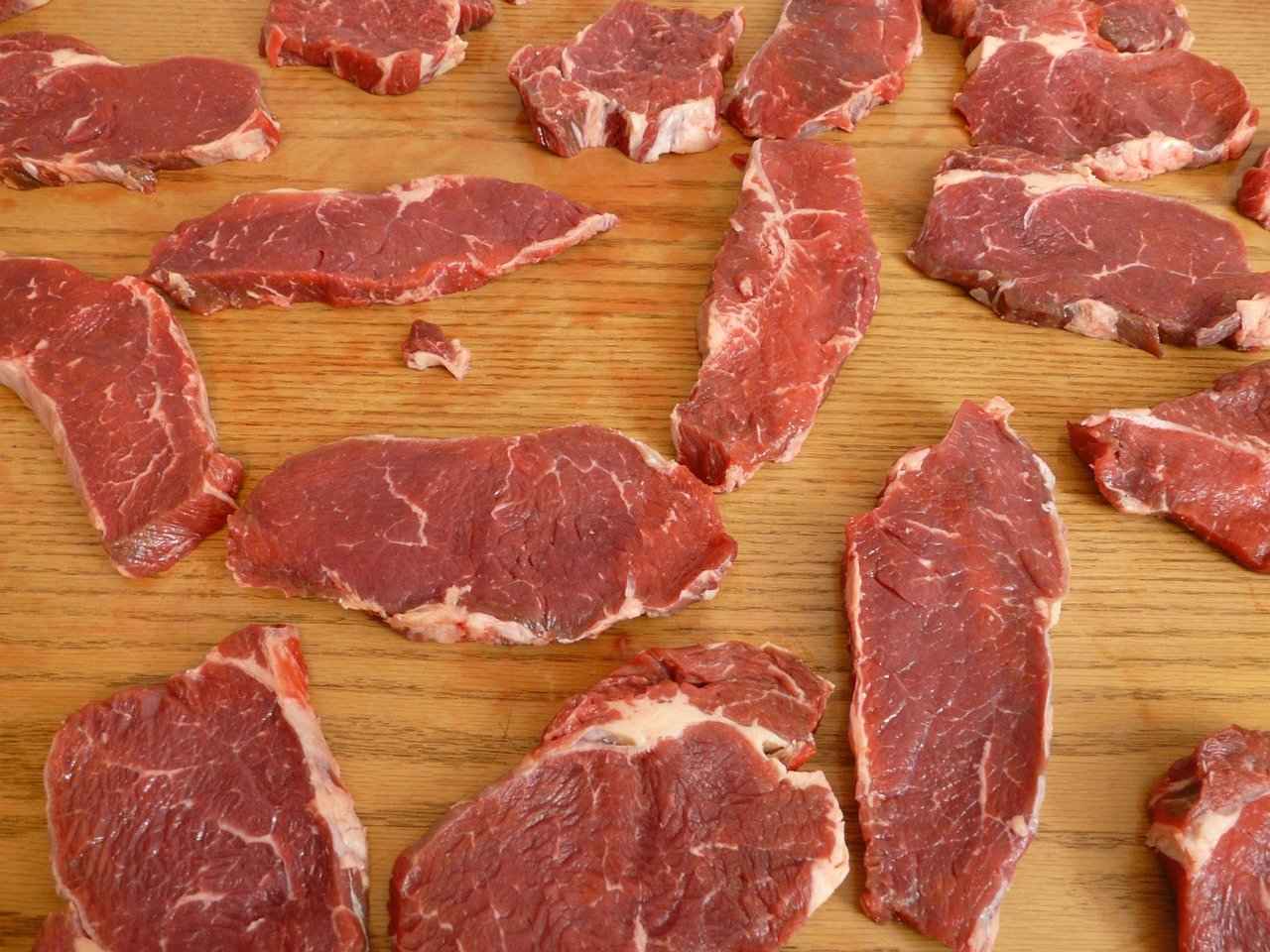
How to Properly Rest Pork Butt?
Resting pork butt is an essential step in the cooking process that can significantly enhance the overall flavor and tenderness of the meat. When cooked, pork butt is a rich and fatty cut that benefits from a period of rest, allowing the juices to redistribute throughout the meat. This process ensures that every bite is juicy and packed with flavor.
What Are the Key Steps for Resting Pork Butt?
- Remove from Heat: Once your pork butt reaches the desired temperature, remove it from the heat source. This could be a smoker, oven, or grill.
- Wrap the Meat: Wrapping the pork butt in aluminum foil or butcher paper is highly recommended. This technique helps to trap moisture and maintain warmth, preventing the meat from drying out during the resting period.
- Use a Cooler: For optimal results, place the wrapped pork butt in a cooler. This method not only keeps the meat warm but also provides an insulated environment that encourages the juices to settle back into the meat.
- Resting Time: Allow the pork butt to rest for at least 30 minutes, but ideally between 1 to 2 hours. The larger the cut, the longer it should rest.
Why Does Resting Enhance Flavor?
During the cooking process, the heat causes the juices within the pork butt to move towards the center. If you cut into the meat immediately after cooking, those juices will escape, resulting in a drier texture. By resting the meat, the juices have time to redistribute, ensuring that each slice is as flavorful and moist as possible.
What Are the Benefits of Wrapping Pork Butt?
Wrapping your pork butt in foil or butcher paper serves multiple purposes:
- Moisture Retention: Wrapping helps to keep the moisture locked in, preventing the meat from drying out.
- Temperature Maintenance: It helps to retain heat, allowing the pork to continue cooking slightly while it rests, which can improve tenderness.
- Flavor Concentration: The wrapping can also help concentrate the flavors, making the meat even more delicious.
How Does Using a Cooler Help?
Using a cooler for resting is a technique often used by barbecue enthusiasts. The cooler acts as an insulated space that maintains the temperature of the meat without cooking it further. This is particularly useful for larger cuts like pork butt, where extended resting times can be beneficial. By placing the wrapped pork butt in a cooler, you can ensure that the meat stays warm while allowing it to rest adequately.
Common Mistakes to Avoid When Resting Pork Butt
- Slicing Too Soon: One of the most common mistakes is cutting into the pork butt before it has had the chance to rest. This can lead to a loss of juices and a less flavorful result.
- Not Allowing Enough Time: Rushing the resting process can result in dry meat. Ensure that you give your pork butt enough time to rest for the best flavor and tenderness.
In conclusion, properly resting pork butt is a crucial step that can make a significant difference in the final product. By following the steps outlined above, you can maximize the flavor and tenderness of your pork butt, making your culinary endeavors truly exceptional.
Wrapping Techniques
When it comes to preparing a mouthwatering pork butt, the resting period is just as important as the cooking process itself. One of the most effective techniques to enhance the flavor and juiciness of the meat is through proper wrapping methods. In this section, we will explore various wrapping techniques that can significantly improve the quality of your pork butt.
Wrapping pork butt serves a dual purpose: it helps to retain moisture during the resting period and allows for the redistribution of juices within the meat. This is crucial because the cooking process causes the juices to move toward the surface of the meat. If the meat is sliced too soon, these flavorful juices can escape, leading to a dry and less flavorful dish.
Choosing between foil and butcher paper can be a matter of personal preference and desired results:
- Foil: Wrapping your pork butt in aluminum foil creates a tight seal that traps moisture. This method is excellent for maintaining a high level of juiciness, making it ideal for those who prefer a more tender texture. However, it can also result in a softer bark, which may not be desirable for everyone.
- Butcher Paper: On the other hand, butcher paper is more breathable than foil. This allows some moisture to escape while still retaining enough to keep the meat juicy. This method is favored by many pitmasters who want to maintain a firmer bark while still benefiting from moisture retention.
To achieve the best results when wrapping your pork butt, follow these steps:
- Let It Rest: Once your pork butt has reached the desired internal temperature, remove it from the heat source and let it sit for a few minutes before wrapping. This allows the surface to cool slightly, making wrapping easier.
- Choose Your Wrap: Decide whether you want to use foil or butcher paper based on your texture preference.
- Wrap Tightly: Place the pork butt in the center of your chosen wrapping material and fold it over tightly. Ensure there are no gaps where moisture can escape.
- Seal the Edges: If using foil, crimp the edges to create a secure seal. With butcher paper, fold the ends over to keep the meat enclosed.
After wrapping, consider placing your pork butt in an insulated cooler. This technique not only helps to maintain the temperature but also allows the meat to rest without cooling down too quickly. By doing this, you can extend the resting period without compromising on warmth, which is essential for achieving a juicy and flavorful result.
While wrapping is a simple process, there are a few common mistakes to avoid:
- Not Wrapping Tightly: Ensure that your wrap is snug. Loose wrapping can lead to moisture loss, defeating the purpose of the technique.
- Using the Wrong Material: Choose the wrapping material that aligns with your desired outcome. Foil for moisture retention or butcher paper for a firmer bark.
- Skipping the Cooler: If you have the time, always consider using a cooler for the resting period. It can make a significant difference in the final product.
By mastering these wrapping techniques, you can elevate your pork butt to new heights of flavor and tenderness. The right wrapping method ensures that every bite is juicy and delicious, making your culinary efforts worthwhile.
Using a Cooler for Resting
When it comes to achieving the perfect pork butt, the resting phase is just as crucial as the cooking process itself. One effective method that many pitmasters and home cooks alike swear by is . This technique not only helps maintain temperature but also ensures that the meat retains its moisture and flavor.
Utilizing a cooler for resting pork butt is an excellent strategy for several reasons:
- Temperature Control: A cooler can keep the meat warm for an extended period, allowing it to rest without cooling down too quickly.
- Moisture Retention: Wrapping the pork butt in foil and placing it in a cooler minimizes moisture loss, ensuring the meat remains juicy.
- Convenience: This method frees up space on your countertop, allowing you to prepare side dishes or set the table while the meat rests.
To effectively use a cooler for resting your pork butt, follow these steps:
- Cook Your Pork Butt: Ensure that your pork butt is cooked to the appropriate internal temperature, typically around 195°F to 205°F for optimal tenderness.
- Wrap the Meat: Once cooked, wrap the pork butt tightly in aluminum foil or butcher paper. This step is essential for retaining heat and moisture.
- Prepare the Cooler: Line the bottom of the cooler with towels to provide insulation. This will help maintain the temperature of the meat.
- Place the Meat in the Cooler: Carefully place the wrapped pork butt in the cooler, ensuring it is snugly fit to prevent movement.
- Close the Lid: Seal the cooler tightly to trap heat inside. You can even add more towels on top for extra insulation.
- Let it Rest: Allow the pork butt to rest for at least one hour, but it can stay in the cooler for up to four hours if needed.
Resting pork butt in a cooler offers multiple benefits that enhance the overall eating experience:
- Improved Flavor: As the meat rests, the juices redistribute throughout, leading to a more flavorful and tender bite.
- Enhanced Texture: The resting period allows the collagen in the meat to break down further, making it more succulent.
- Flexibility: This method allows you to time your meal perfectly, as the pork butt can rest while you finish preparing other dishes.
There are some misconceptions regarding the use of a cooler for resting pork butt:
- It Will Cool Down Too Much: Many believe that using a cooler will cause the meat to cool off significantly. However, if done correctly, the cooler will maintain a warm temperature.
- It’s Only for Long Rests: While a cooler is excellent for longer resting periods, it can also be beneficial for shorter rests, ensuring optimal moisture retention.
In conclusion, using a cooler for resting pork butt is a proven technique that enhances flavor, moisture retention, and overall tenderness. By following these steps and understanding the benefits, you can elevate your pork butt to a new level of deliciousness.
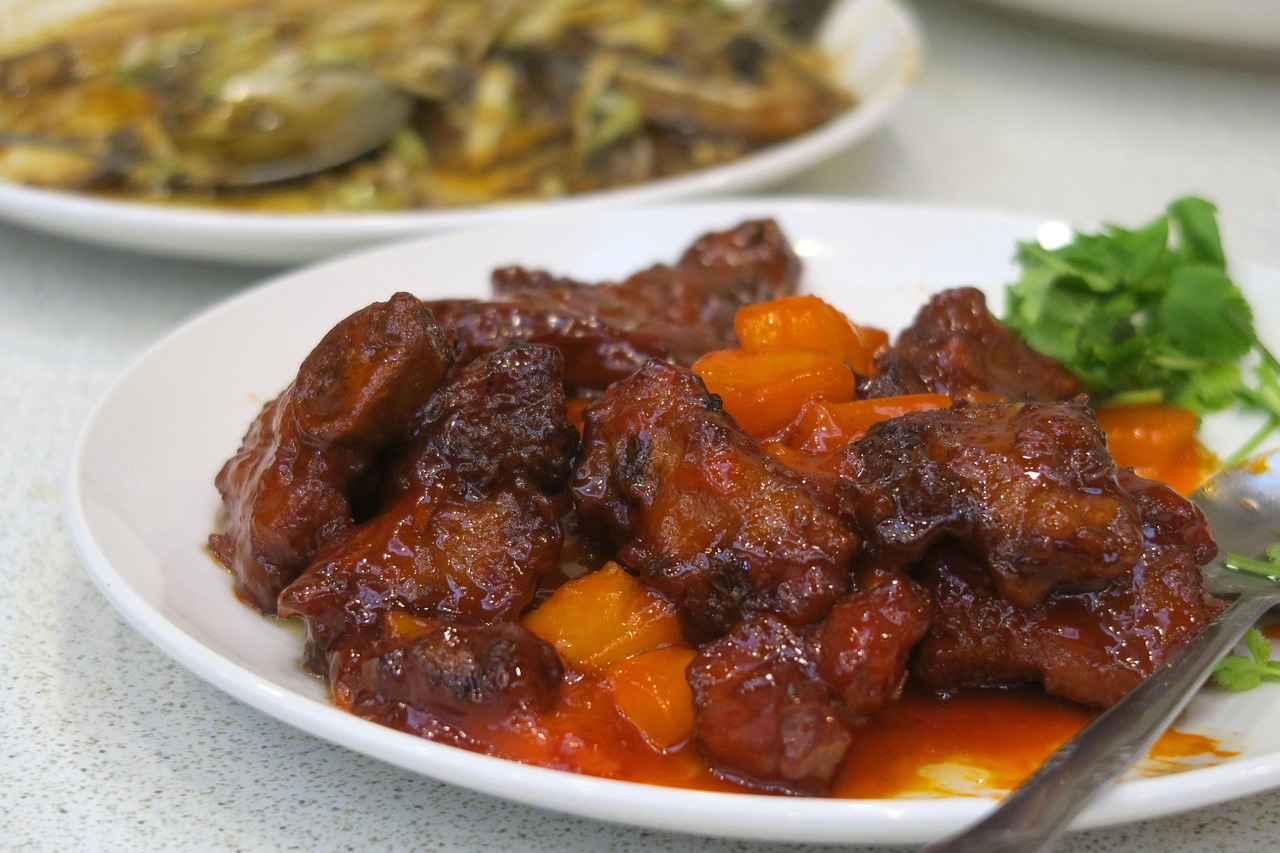
Common Mistakes to Avoid When Resting Pork Butt
Resting pork butt is a critical step in the cooking process that can significantly impact flavor and texture. However, many home cooks overlook this important phase, leading to disappointing results. Understanding and avoiding common mistakes can elevate your culinary game and ensure a succulent, flavorful dish.
- Cutting Too Early: One of the most frequent errors is slicing the pork butt before it has had sufficient time to rest. Cutting into the meat prematurely can cause the flavorful juices to escape, leaving you with a dry and less satisfying meal. It is essential to allow the meat to rest for at least 30 minutes to an hour, depending on the size, to ensure that the juices redistribute throughout the meat.
- Insufficient Resting Time: Another common pitfall is not allowing enough resting time. While it may be tempting to dig in right after cooking, this can lead to a less tender and flavorful result. A resting period of 1 to 2 hours is often ideal, especially for larger cuts. This allows the fibers to relax and the juices to settle, resulting in a moist and delicious pork butt.
- Neglecting to Wrap: Failing to wrap the pork butt during the resting period can lead to a loss of heat and moisture. Wrapping the meat in foil or butcher paper helps retain its warmth and prevents it from drying out. This simple step can make a significant difference in the final outcome.
- Ignoring Temperature: The temperature at which the pork butt is allowed to rest can also affect the final product. It’s essential to keep the meat warm without cooking it further. Placing it in a cooler or wrapping it in towels can help maintain the right temperature while allowing it to rest properly.
- Not Considering Size and Thickness: The size and thickness of your pork butt play a vital role in determining the appropriate resting time. Larger cuts require more time for the juices to redistribute. Always adjust your resting time based on the size of the meat to achieve optimal tenderness.
By being aware of these common mistakes, you can ensure that your pork butt turns out perfectly every time. Remember, patience is key in cooking, especially when it comes to resting meat. Taking the time to rest your pork butt properly will reward you with a dish that is not only flavorful but also incredibly tender.
Implementing these practices will enhance your cooking skills and allow you to serve up a pork butt that impresses family and friends alike. So, the next time you prepare this delicious cut of meat, keep these tips in mind to avoid common pitfalls and achieve the best possible results.
Cutting Too Early
When it comes to preparing a delicious pork butt, one of the most critical steps is ensuring that it is properly rested before cutting. can be detrimental to the overall flavor and texture of the meat. This section will delve deeper into why this mistake occurs and how to avoid it, ensuring that your pork butt is as juicy and flavorful as possible.
One of the biggest mistakes that many home cooks make is slicing into the pork butt before it has had the chance to rest. When meat is cooked, the fibers tighten and juices are pushed towards the center. If you cut into the meat too soon, you risk losing those precious juices that contribute to the overall flavor and moisture of the dish.
Resting allows the juices to redistribute throughout the meat, making every bite succulent and flavorful. When pork butt is allowed to rest, the muscle fibers relax, and the juices are drawn back towards the center, resulting in a more tender and juicy piece of meat. This is especially important for larger cuts, where the resting period can make a significant difference.
The ideal resting time for pork butt generally ranges from 30 minutes to 2 hours, depending on the size of the cut. A larger pork butt may require more time to rest, while smaller cuts may need less. During this time, it is crucial to keep the meat warm to prevent it from cooling down too much.
- Wrapping in Foil: Wrapping your pork butt in aluminum foil can help retain heat and moisture during the resting period.
- Using a Cooler: Placing the wrapped pork butt in a cooler can maintain its temperature for an extended period, ensuring it stays warm while resting.
Many people believe that resting is an unnecessary step, but this is far from the truth. The misconception often stems from impatience or the desire to serve the meal quickly. However, taking the time to let your pork butt rest can drastically improve the final outcome.
If you decide to slice into your pork butt before it has rested adequately, you may find that the meat is dry and lacks flavor. The juices will run out onto the cutting board instead of being absorbed back into the meat, leading to a less satisfying eating experience. This is particularly disappointing after spending hours preparing and cooking your pork butt.
- Be Patient: Allow the pork butt to rest for the recommended time based on its size.
- Keep it Covered: Use foil or a clean kitchen towel to cover the meat while it rests.
- Use a Meat Thermometer: Check the internal temperature to ensure it remains at a safe level during the resting period.
In conclusion, avoiding the mistake of cutting too early is essential for achieving the best flavor and texture in your pork butt. By allowing it to rest, you ensure that every bite is juicy and packed with flavor, making your culinary efforts truly rewarding.
Insufficient Resting Time
When it comes to preparing pork butt, one of the most critical steps is ensuring that you allow sufficient resting time after cooking. Many home cooks underestimate the importance of this phase, often leading to disappointing results. Insufficient resting time can significantly affect the overall quality of your dish, resulting in dry and less flavorful meat.
Resting pork butt is essential because it allows the juices within the meat to redistribute. When pork butt is cooked, the muscle fibers contract and push juices towards the center of the meat. If you slice into it too soon, those precious juices will flow out, leaving you with a dry piece of meat. This is why adequate resting time is crucial for achieving that tender and juicy texture that makes pork butt so desirable.
The resting time for pork butt can vary based on several factors, including the size of the cut and the cooking method used. Generally, a resting period of 30 minutes to 2 hours is recommended. Larger cuts will benefit from longer resting times, allowing for complete juice redistribution. For example, a 10-pound pork butt may require a full two hours to rest properly.
- Cooking Method: Different methods like smoking, roasting, or braising may require adjustments in resting time.
- Meat Size: The larger the cut, the longer it should rest to ensure even moisture distribution.
- Temperature: The cooking temperature can also play a role; higher temperatures may necessitate longer resting periods.
To maximize flavor retention and ensure a juicy outcome, consider implementing some best practices for resting your pork butt:
- Wrap the Meat: Use aluminum foil or butcher paper to wrap the pork butt. This helps retain moisture during the resting period.
- Use a Cooler: Placing the wrapped pork butt in a cooler can help maintain its temperature while it rests, an effective method for longer rests.
To achieve the best results, it’s essential to avoid common mistakes when resting pork butt:
- Cutting Too Early: One of the biggest mistakes is slicing into the meat before it has had a chance to rest. This can lead to a significant loss of juices.
- Not Allowing Enough Time: Rushing the resting process can compromise the flavor and tenderness of the meat. Always err on the side of caution and allow ample time for resting.
In summary, understanding the significance of resting pork butt cannot be overstated. Proper resting allows the meat to achieve optimal flavor and tenderness, transforming your culinary creation into a delicious dish. By following the recommended practices and avoiding common pitfalls, you can ensure that every bite of your pork butt is juicy and full of flavor.
Frequently Asked Questions
- How long should I rest pork butt after cooking?
The ideal resting time for pork butt is generally between 30 minutes to 2 hours. The exact time can depend on the size of the cut and the cooking method used.
- Why is resting pork butt essential?
Resting allows the juices to redistribute throughout the meat, which enhances the flavor and tenderness. This means every bite will be more succulent and enjoyable!
- Can I rest pork butt in a cooler?
Absolutely! Placing the wrapped pork butt in a cooler is a fantastic way to maintain temperature while allowing it to rest, especially for longer periods.
- What are common mistakes when resting pork butt?
Some common mistakes include cutting too early, which can lead to juice loss, and not allowing enough resting time, resulting in dry meat.
- Does the cooking method affect resting time?
Yes! Different cooking methods like smoking or slow-roasting may require adjustments in resting time to achieve the best flavor and texture.

